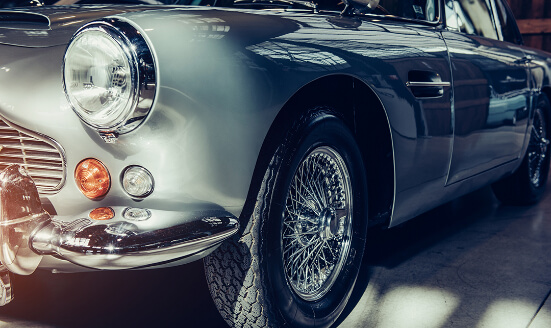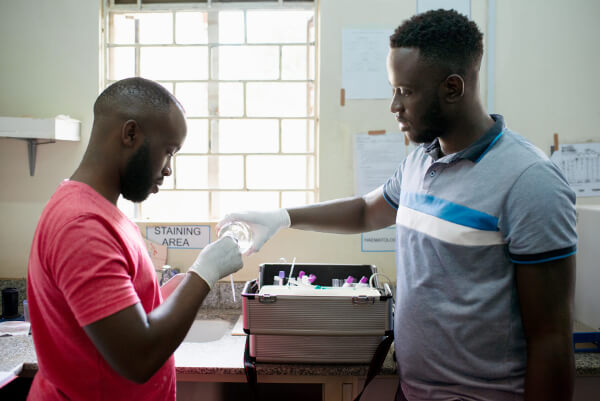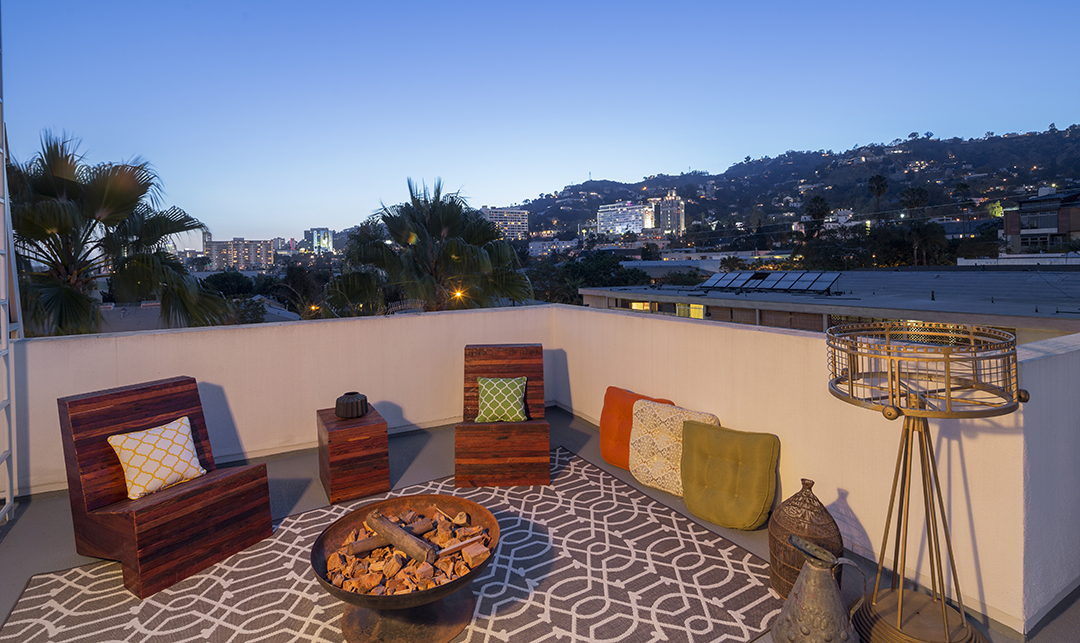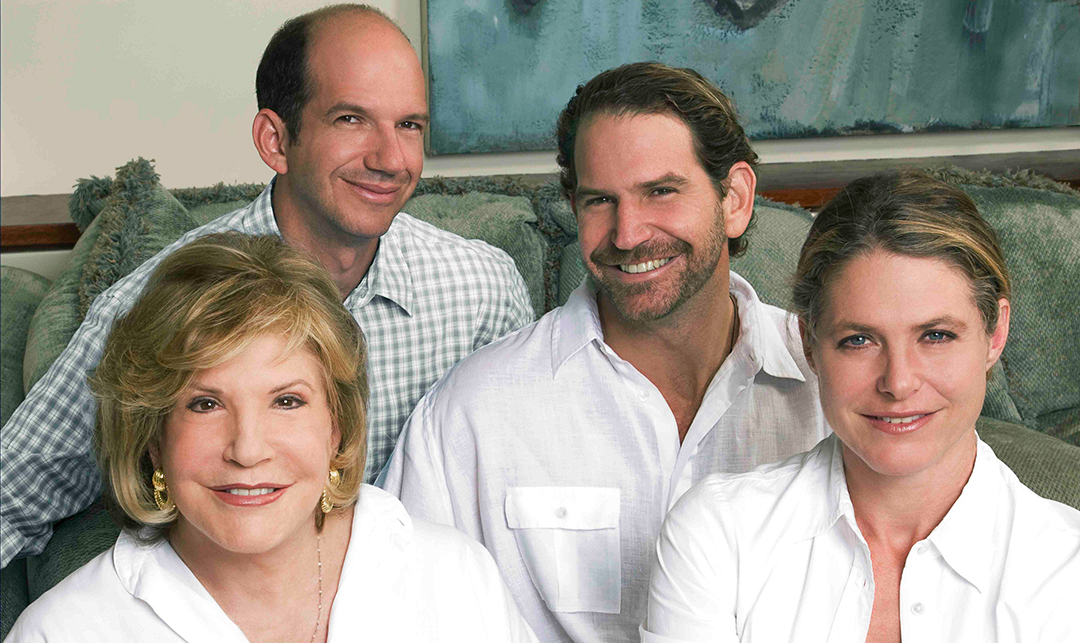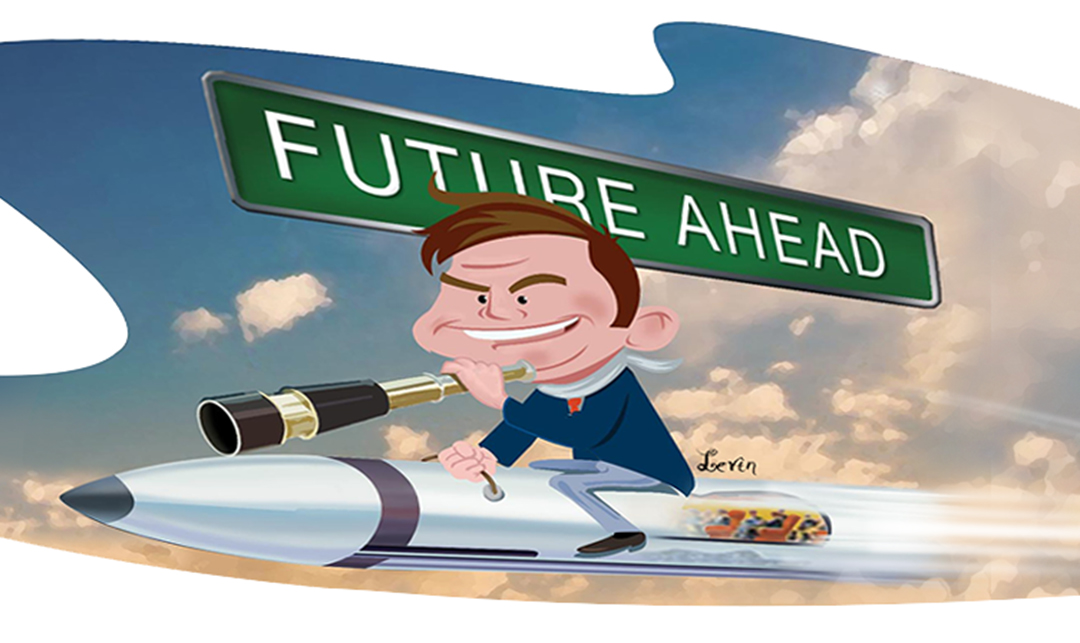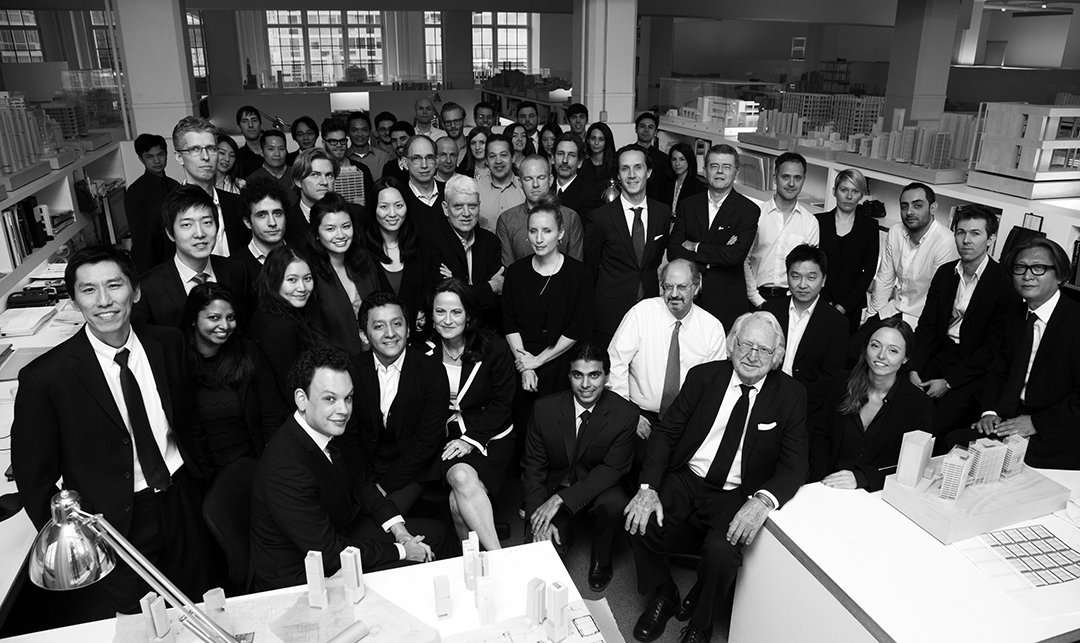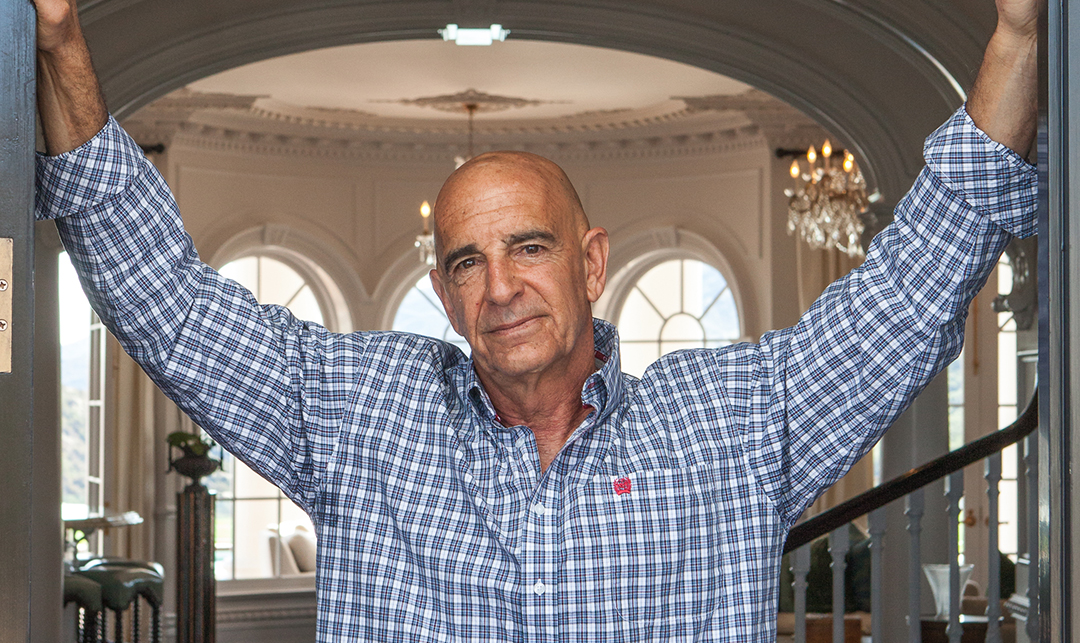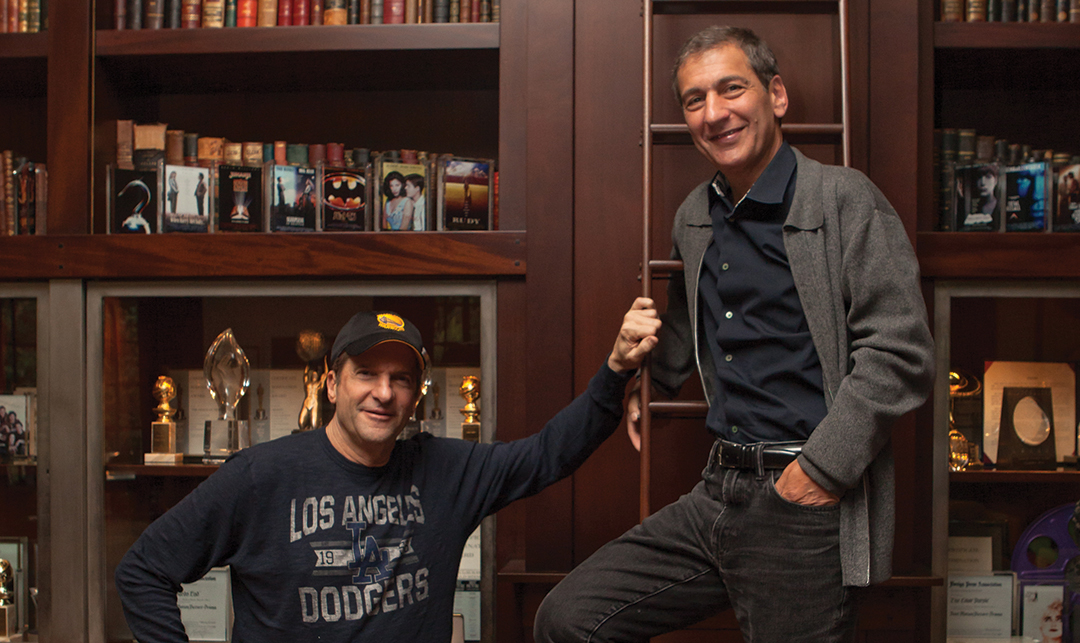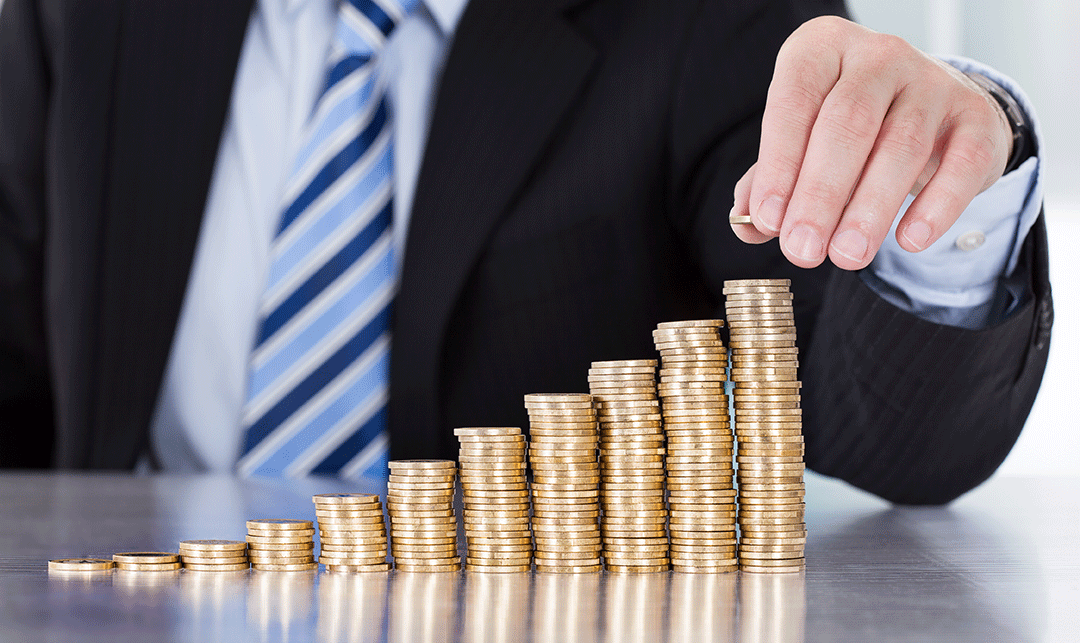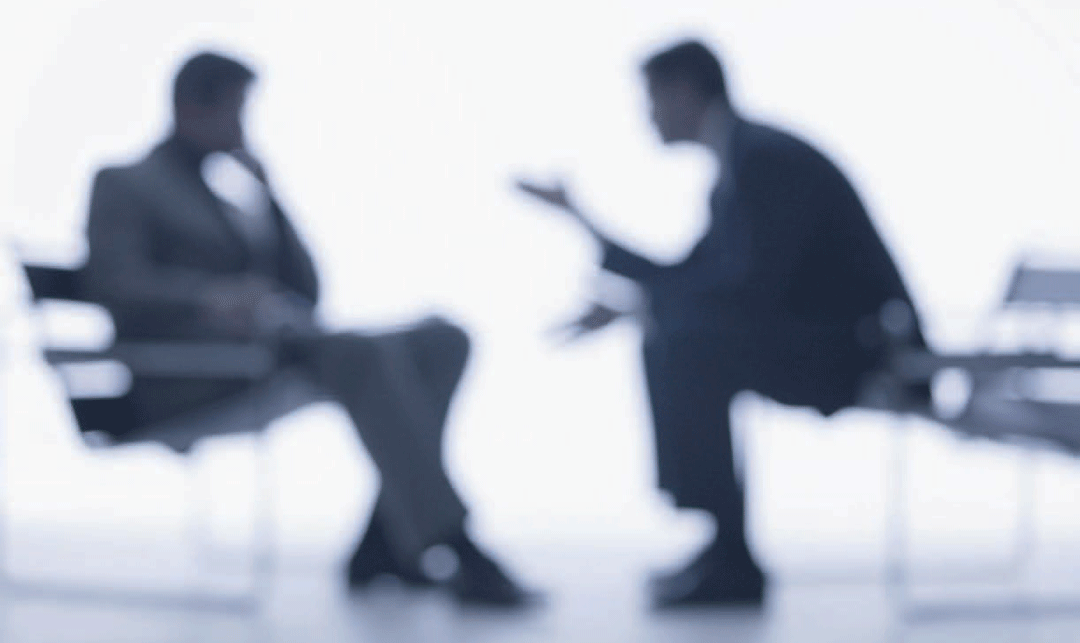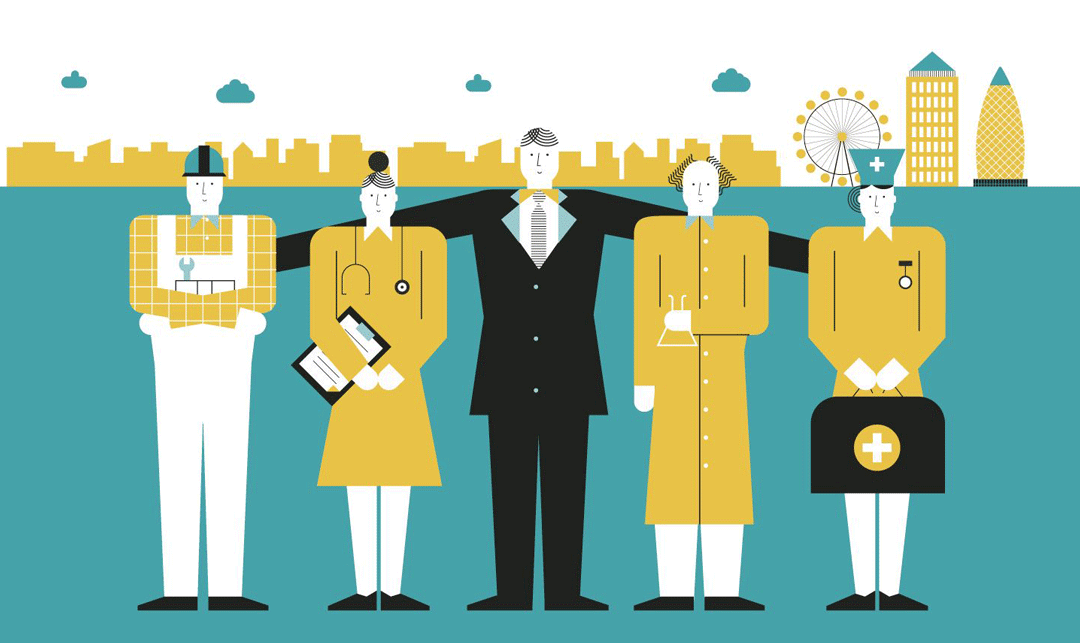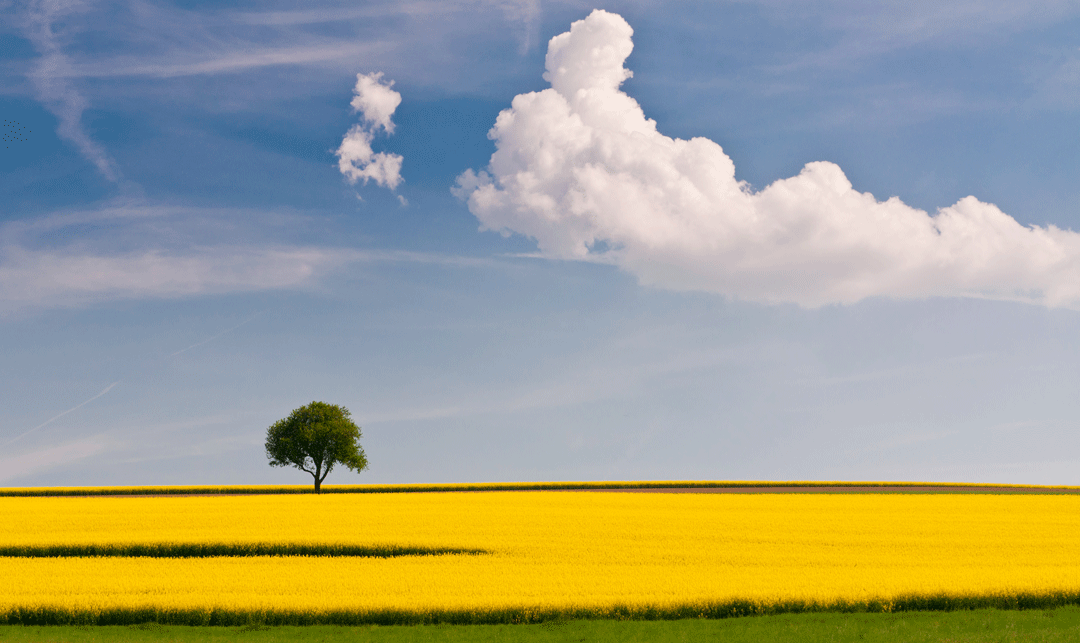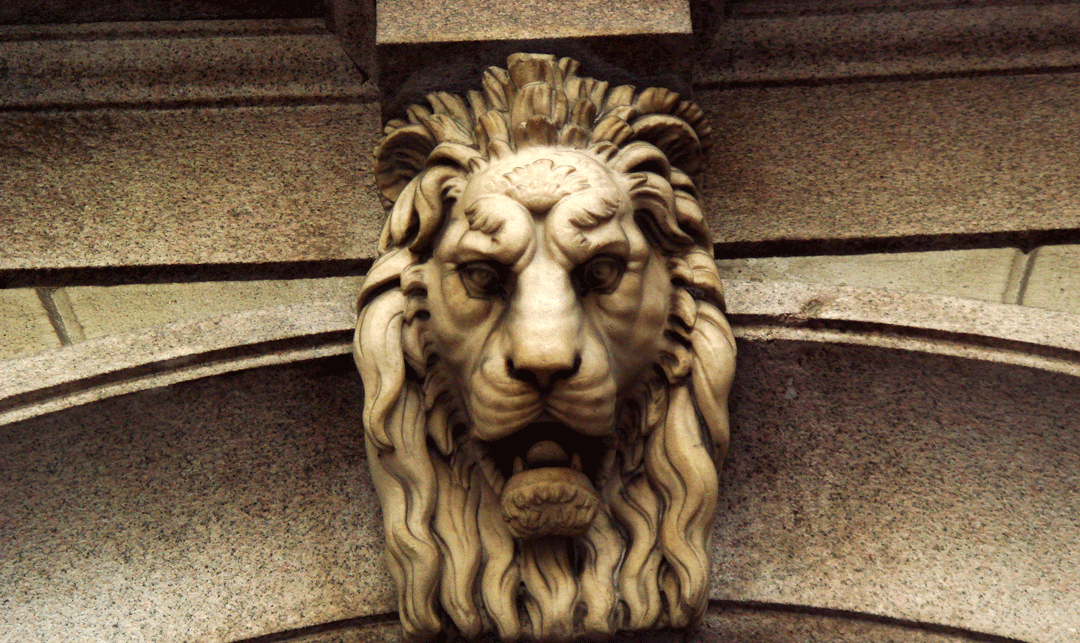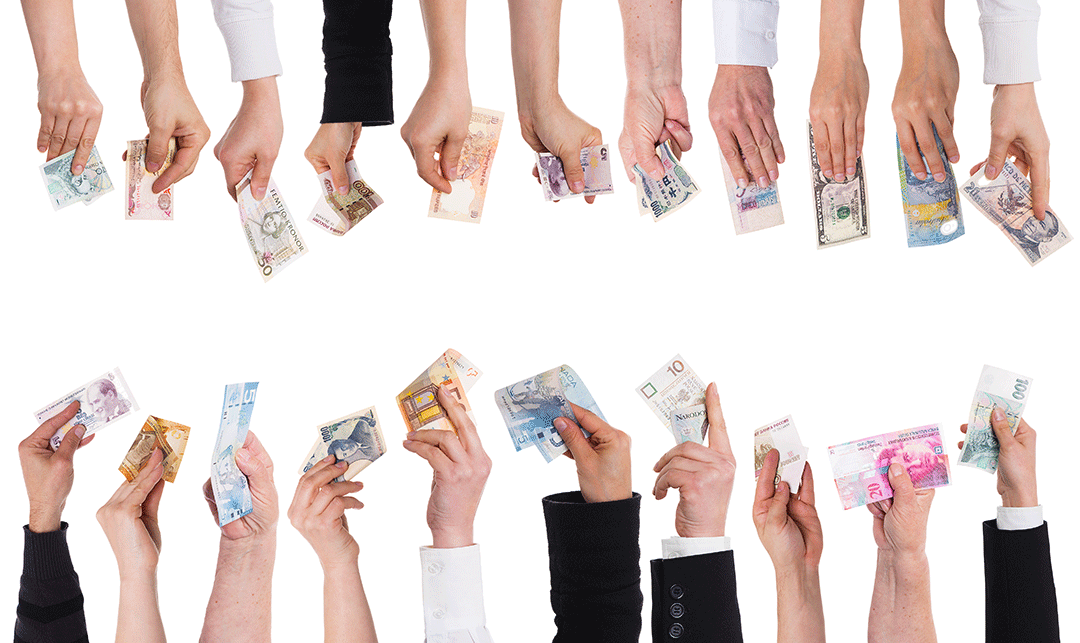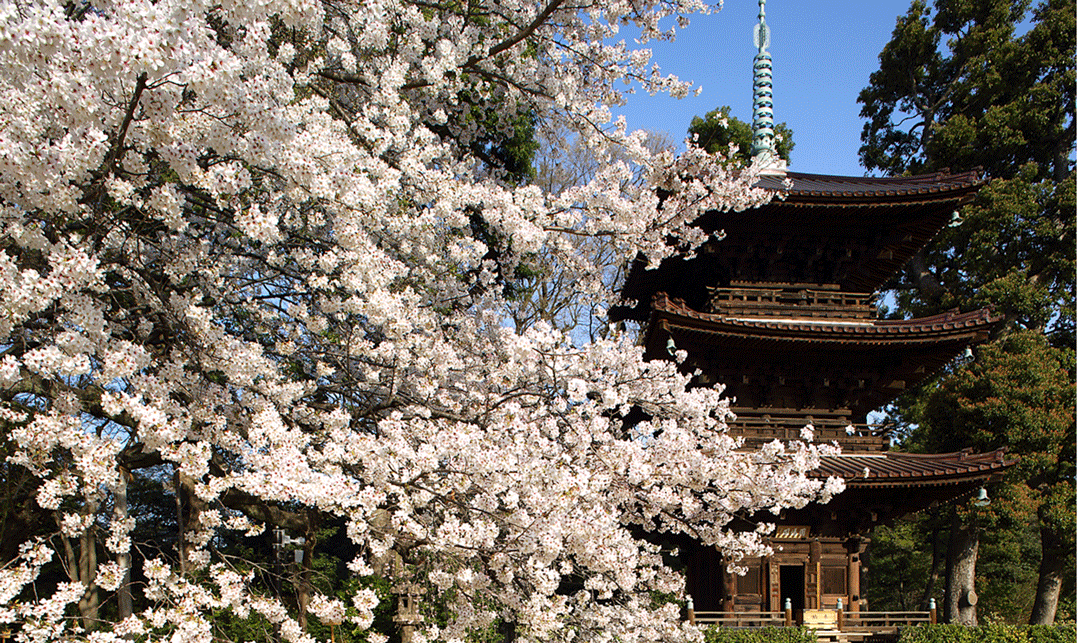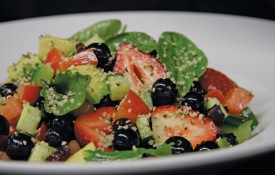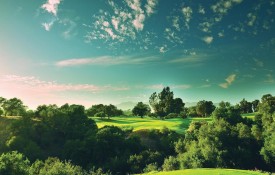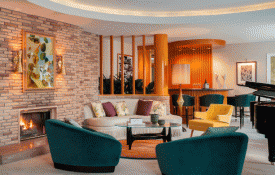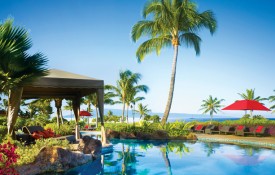Visiting Japan at least once in your life is a must, whether on business or simply to explore the country’s incredible sights, food, and culture. We visited Tokyo and Kyoto for 11 days and didn’t get to half the things on our wish list. A direct flight from Los Angeles or New York to Tokyo takes 11 or 12 hours, just a few more than going to Europe, and the flights aren’t overly expensive if planned ahead, so neither distance nor cost should be deal breakers. For corporate-incentive trips and retreats, many Japanese traditions can be valuable for team-building and improving performance.
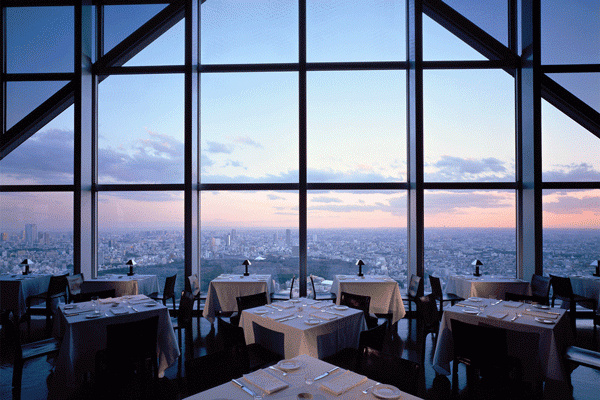
NY Grill, famed for its appearance in Lost in Translation, offers sky-high views of Tokyo and a menu with ultra-high quality Kobe and Sendai beef. (Photo Credit: Courtesy of NY Grill)
Where To Stay
Our itinerary was heavily focused around cultural and culinary adventures, both modern and traditional. We opted to go during the height of the cherry blossom season, which is stunning but also means more tourists and higher hotel prices. The Ascott Marunouchi Tokyo has tastefully appointed, modern corporate suites for those who like a bit more space or need to stay for a longer period of time. It’s in the financial district, offers expansive views of the city, and is just a short walk to the Tokyo Imperial Palace, an ideal place to view the cherry blossoms. For a tranquil and elegant retreat, we traveled a bit out of the city to relax at Hotel Chinzanso Tokyo, a five-star hotel featuring a sprawling Japanese garden with cherry blossom trees and multiple dining choices, including Mokushundo, a stone grill and kaiseki restaurant. The hotel has a outdoor pool and waterfall, a high-end spa with a traditional Japanese onsen hot pool, and with 260 rooms and many restaurants onsite, often hosts large group meetings. We also enjoyed the Tokyo Station Hotel, a well-preserved living heritage site. The hotel is modern and the central location can’t be beat. Among stellar offerings, it features an elegant brunch and rooftop space that hosted a recent event for Louis Vuitton, and a large Imperial Suite for nearly US $10,000 per night, although many rooms are more reasonable for traveling executives and their teams or families. It’s also attached to the railway station and part of the same building as the famous underground mall and food court with some of the best casual eating and shopping in the city. You also can’t go wrong with the Ritz Carlton properties in both Tokyo and Kyoto, each with full spa amenities and top-rated restaurants.
Where To Eat
Tokyo is a phenomenal place to dine on any budget, although it’s worth investing in fine dining choices as Tokyo is ranked the No. 1 city in the world in terms of Michelin stars awarded, followed by Paris. The 2018 Tokyo Michelin Guide lists 12 restaurants at three stars, 56 at two stars, and 166 at one star. We were fortunate to visit some of these during our trip. We loved both Michelin one-star-rated Sushi Arai and three-star Ginza Kojyu for a traditional multicourse kaiseki meal, typically composed of 10 or more dishes, including seasonal seafood, meat, and vegetables. Reservations are challenging, so book in advance, and prices are steep, but well worth it. Though our primary culinary focus was Japanese, we couldn’t resist a visit to Michelin-starred French restaurant Azure 45 on the 45th floor of the Ritz Carlton, with brilliant views of the city at night. Lauded Executive Chef Shintaro Miyazaki serves adventurous delicacies such as rocket coulis, caramelized veal sweetbreads, steamed Scottish blue lobster, shrimp mousse, geoduck clam, and Miyazaki wagyu beef stewed for 30 hours. Hotel Chinzanso’s Mokushundo also offers a traditional kaiseki dinner consisting of small dishes with locally sourced ingredients, prepared tableside on Mount Fuji lava stone.

Sushi elegantly prepared at Mizuki at the Ritz Carlton, Kyoto (Photo Credit: Courtesy of Mizuki – Ritz Carlton)
For those who want the Bill Murray/Scarlett Johannson Lost in Translation experience, head to the NY Grill at the Park Hyatt Tokyo, where scenes from the Oscar-winning movie were filmed. It boasts great views of the city and, perhaps more important, is also one of the best places in Tokyo to get ultra-high quality Kobe and Sendai beef. Executive Chef de Cuisine Steffan Heerdt is known for these Japanese cuts and for sustainable and locally sourced ingredients. In Kyoto, Mizuki at the Ritz Carlton was our favorite restaurant. Mizkui offers sushi, kaiseki, and high-end bento boxes in a tranquil setting; exotic and seasonal fare ranged from bonito and baby squid to blowfish-skin jello. We also sampled a number of sakes, including a special Yamaguchi sparkling sake, another flavored with fresh peaches, Soku, and Isoza, which we were told is Kyoto’s top-rated sake.
Tokyo is ranked the No. 1 food city in the world in terms of Michelin stars awarded, followed by Paris.
And if you’re seeking high-end taste without the high price tag, try Tokyo’s Rokurinsha, one of the best-known ramen spots in Tokyo Station; Nadai Tonkatsu Katsukura in Kyoto Station; and The Cube, where the specialty is tonkatsu, or fried pork, and patrons can grind their own sesame seeds and make their own custom-spiced dipping sauce. Before you decide on any restaurant, whether top-tier or casual, it’s beneficial to learn a bit of Japanese. For example, before your meal, it’s customary to say “itadakimasu” (pronounced eat-ah-DAH-kee-mas) to the chef or server, which means, “I gratefully receive” (this food), and “gochisosama” (pronounced go-chee-SO-sum-uh) or “thank you for the meal,” after finishing. We found that showing this respect led to a much more enjoyable experience.
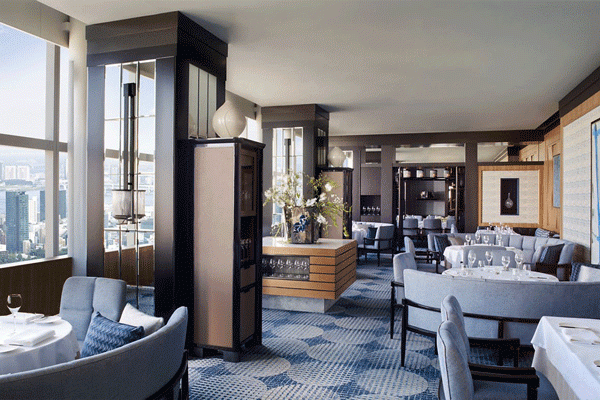
For another gravity-defying, fine dining experience, Michelin-starred Azure 45 awaits on the 45th floor of Ritz Carlton, Tokyo (Photo Credit: Courtesy of Azure)
What To Do
While cuisine was high on our list, we also took in some sights, from walking among the bamboo groves at Arashiyama, to traveling by bullet train from Tokyo to Kyoto with views of Mount Fuji. In Tokyo, we joined a traditional tea ceremony, or chado workshop, at Shizu Kokoro. Chado is a spiritual discipline that teaches its practitioners how to slow down, connect with nature, and become aware of the small but important things in life. There were six of us at the workshop, including three women dressed in traditional kimonos. Each step of the ceremony centered around the preparing, tasting, and sharing of matcha tea, and each focused on mindfulness, one of the Noble Eightfold Paths in the teachings of the Buddha.
For something less traditional and a bit up tempo, we joined a Mario Kart tour, which begins with donning a choice of Mario Kart or superhero costumes followed by driving personal high-speed go-karts through the streets of Tokyo, including some of the most traveled intersections, all led by an experienced guide in a go-kart of their own. An international driver’s license is required, which can be obtained in advance of your trip at any AAA office. It was pretty wild whizzing in and out of lanes in such tiny cars among the dense city traffic.
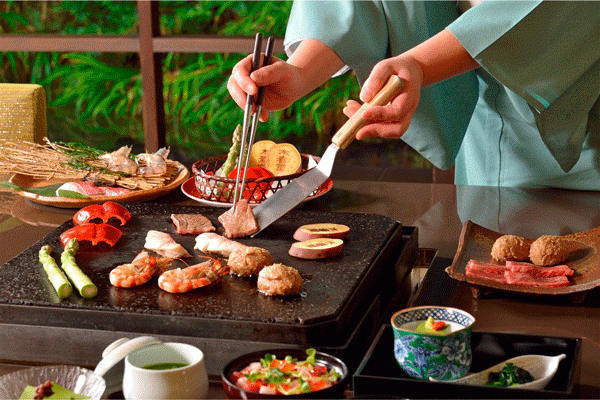
A traditional kaiseki dinner, cooked tableside on Mount Fuji lava stone
To relax we went to Chi, the spa at the Shangri-La Hotel, which features luxurious private spa suites with soaking tubs, showers, and massage tables. We tried the Yang Chi Energizer and Chi Balance massages, the latter of which is a blend of Asian massage techniques personalized to suit your current “yin-yang status” and includes pressure work, energizing methods for “yang stimulation,” and relaxing body work for “yin calm.” First we were each given a foot bath, then chose from a shower, steam bath, or jacuzzi/soaking tub to cleanse before the massage. Each tub included a choice of bath salts and oils. After putting on robes, we rang a bell to call for our service. We agreed they were the best massages we’ve had.
In Kyoto we went on a fun and informational walking Gion and Kaiseki tour. Run by Arigato Japan, knowledgeable local tour guides took us through Gion, an area where geishas still live and work, and learned their stories. We also tasted plum wines and local pastries before finishing with a group multicourse dinner. After taking a train to the bamboo groves at Arashiyama, we concluded our time in Kyoto with a meditation at the Shunkoin Temple, where Deputy Head Priest Takafumi Kawakami led us in a traditional Buddhist meditation ceremony. In all, the trip was memorable, inspiring, and restorative.
Featured Image Credit: Hotel Chinzanso

